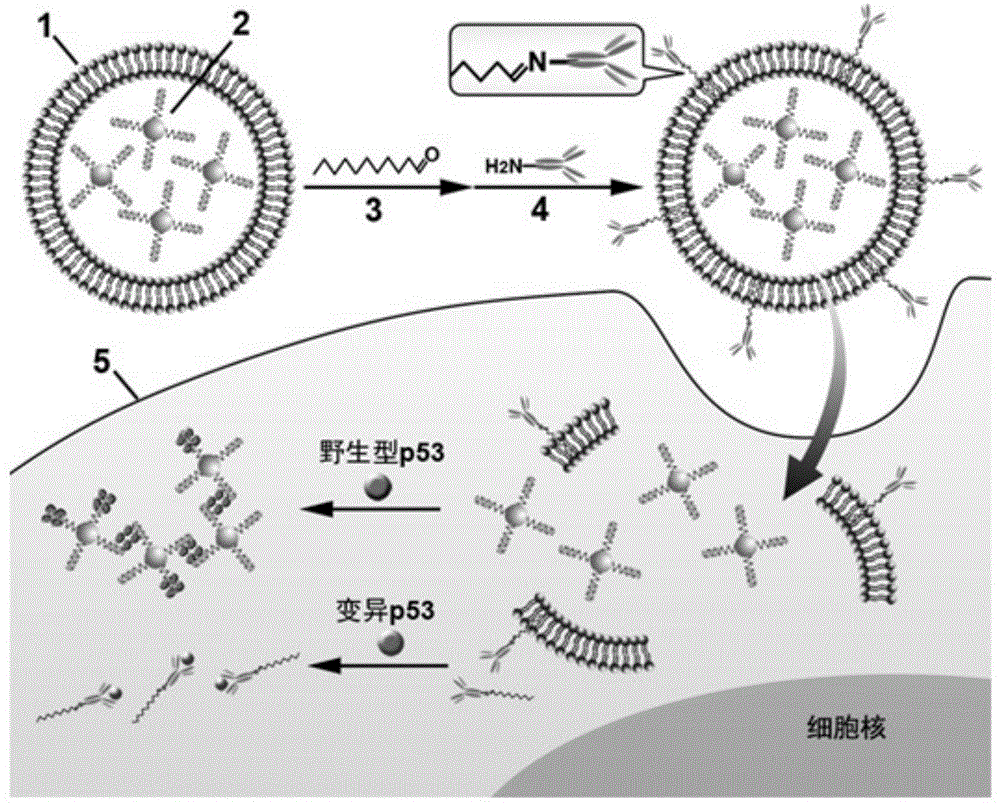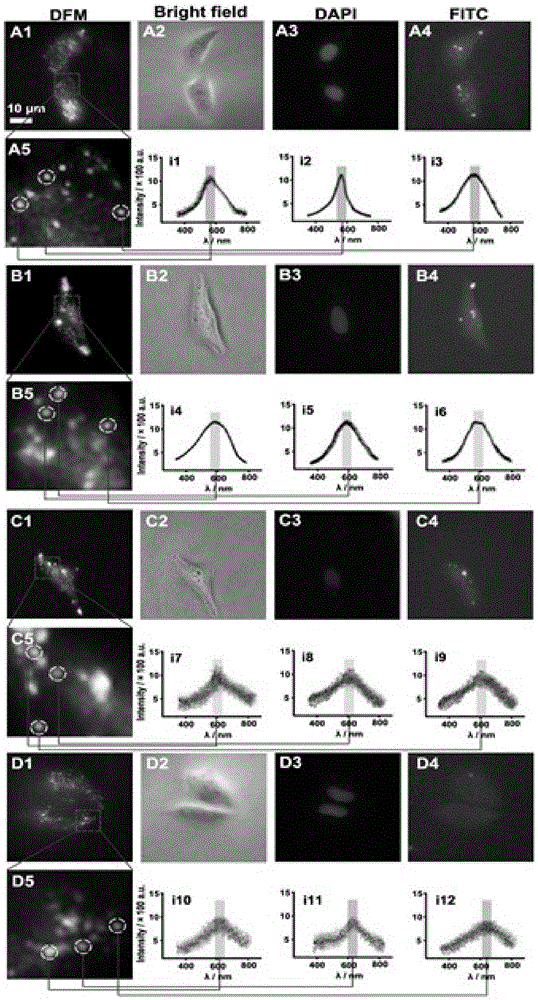Nanometer vesica capable of detecting wild type p53 protein and variant p53 protein in cells simultaneously
A nanovesicle and wild-type technology, applied in measurement devices, material analysis through optical means, instruments, etc., can solve problems such as low sensitivity, large staining differences, and inability to analyze and detect p53 protein in situ, achieving Improved specificity and sensitivity, high specificity effect
- Summary
- Abstract
- Description
- Claims
- Application Information
AI Technical Summary
Problems solved by technology
Method used
Image
Examples
Embodiment 1
[0019] Example 1. Synthesis of nanovesicles that can simultaneously detect wild-type and mutant p53 proteins in cells
[0020] (1) According to the existing literature, 13nm gold colloid was synthesized as a seed. 50mL HAuCl 4 (0.01%) solution was added to the round bottom flask and heated to boiling, then 5mL sodium citrate solution (38.8mM) was added rapidly and continued to stir for 30 minutes until the solution turned red, and the obtained 13nm gold seeds were used to prepare the particle size in Nano gold around 60nm.
[0021] (2) Using gold species to synthesize 60nm gold nanoparticles. Mix 1 mL of gold seed solution with 100 µL of NH 2 OH·HCl (0.2M) was mixed and diluted to 25mL with pure water, then 3.0mLHAuCl 4 (0.01%) was slowly added dropwise into the above mixed solution, and the stirring was continued for 30 minutes until the solution turned dark red. The obtained nano-gold solution was centrifuged, washed with pure water, and stored at 4°C.
[0022] (3) Usi...
Embodiment 2
[0024] Example 2. In situ imaging and detection of the distribution of p53 protein in cells using nanovesicles
[0025] Using the HeLa cervical cancer cell line as a model, first HeLa cells (1.0 mL, 1×10 6 mL -1 ) were planted in confocal culture dishes and cultured for 24 hours. Then 60 μL of nanovesicles were added to the dish and incubated at 37°C for 2 hours. The dishes were washed with PBS and the cells were submerged, then observed under a dark-field microscope and a fluorescence microscope. Cell imaging see figure 2 . It was found that in the tumor cell HeLa, the color of gold nanoparticles in the dark field image was green, and there was no obvious aggregation, indicating that the content of wild-type p53 was low; while the fluorescence signal of FITC was strong, indicating that the content of mutant p53 was high. With nutlin-3 drug solution (250μg mL -1 ) to cells (1.0mL, 1×10 6 mL -1 ) for pretreatment, cells were co-cultured with drugs for 48 hours, then 60...
PUM
| Property | Measurement | Unit |
|---|---|---|
| Particle size | aaaaa | aaaaa |
Abstract
Description
Claims
Application Information
 Login to View More
Login to View More - R&D
- Intellectual Property
- Life Sciences
- Materials
- Tech Scout
- Unparalleled Data Quality
- Higher Quality Content
- 60% Fewer Hallucinations
Browse by: Latest US Patents, China's latest patents, Technical Efficacy Thesaurus, Application Domain, Technology Topic, Popular Technical Reports.
© 2025 PatSnap. All rights reserved.Legal|Privacy policy|Modern Slavery Act Transparency Statement|Sitemap|About US| Contact US: help@patsnap.com


